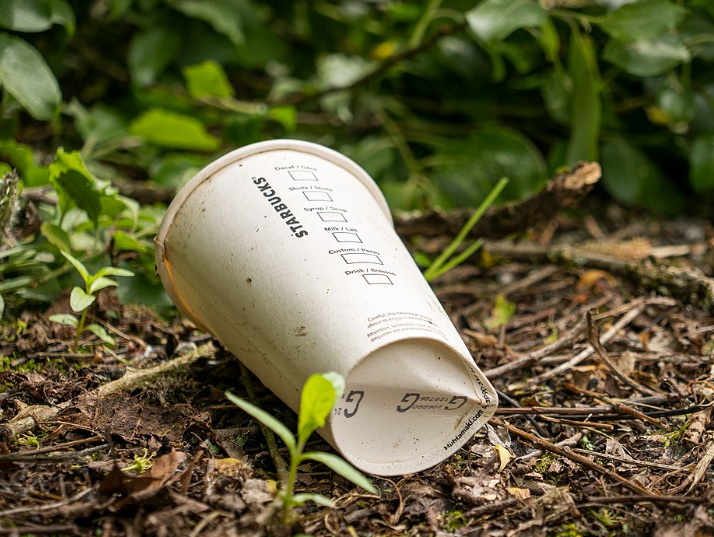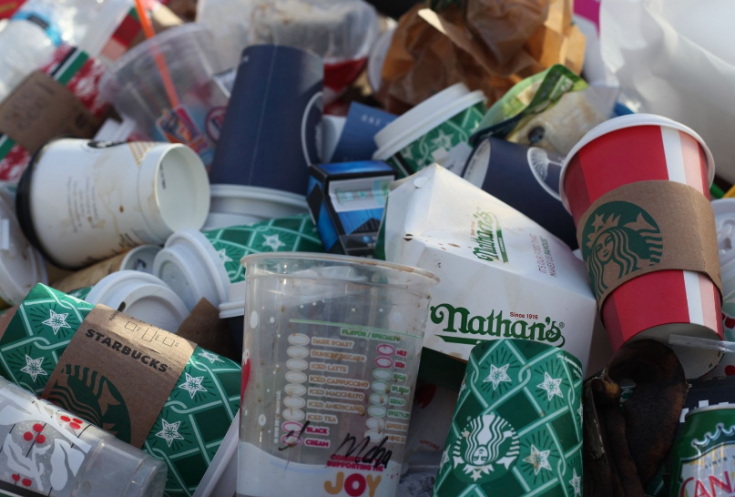
Content Menu
● Introduction to Disposable Cup Covers
>> Materials Used in Disposable Cup Covers
>>> Plastic vs. Bioplastic Covers
>> Environmental Impact of Disposable Cup Covers
● Alternatives to Disposable Cup Covers
>> Innovations in Sustainable Packaging
>>> Innovative Recycling Technologies
>> Consumer Awareness and Behavior Change
>>> Role of Policy and Education
● Global Initiatives and Regulations
>> Impact of Regulations on Disposable Cup Covers
>> Future Directions
● Conclusion
● FAQs
>> 1. What Materials Are Disposable Cup Covers Typically Made Of?
>> 2. Are Bioplastic Covers Environmentally Friendly?
>> 3. What Are Some Alternatives to Disposable Cup Covers?
>> 4. How Do Disposable Cup Covers Contribute to Pollution?
>> 5. What Innovations Are Emerging to Address Disposable Cup Waste?
The use of disposable cup covers, often associated with disposable cups, has become a ubiquitous practice in our daily lives. However, the question remains: are these disposable cup covers environmentally friendly? To address this, we need to delve into the materials used, their impact on the environment, and explore alternatives that could mitigate these effects.

Introduction to Disposable Cup Covers
Disposable cup covers are typically made from plastic or bioplastic materials. These covers are designed to fit over the top of disposable cups, providing a convenient way to drink beverages on the go. However, their convenience comes at a cost. The production and disposal of these covers contribute significantly to environmental pollution.
Materials Used in Disposable Cup Covers
Most disposable cup covers are made from plastic, which is derived from non-renewable resources such as oil and natural gas. The extraction and processing of these resources have severe environmental impacts, including pollution and greenhouse gas emissions. Additionally, the use of bioplastics, such as PLA (polylactic acid), is becoming more common. While bioplastics are made from renewable resources like corn starch or sugarcane, their production still requires significant energy inputs and can compete with food crops for land use.
Plastic vs. Bioplastic Covers
- Plastic Covers: These are the most common type of disposable cup covers. They are lightweight, inexpensive, and easy to produce. However, they are not biodegradable and contribute to plastic pollution in oceans and landfills. Plastic covers are often made from polyethylene or polypropylene, which are durable but non-biodegradable.
- Bioplastic Covers: Made from renewable resources, bioplastic covers are biodegradable and compostable under certain conditions. However, their decomposition requires specific composting facilities, which are not widely available. Bioplastics are seen as a more sustainable option but still have limitations in terms of production and disposal.
Environmental Impact of Disposable Cup Covers
The environmental impact of disposable cup covers is multifaceted:
1. Resource Consumption: The production of plastic and bioplastic covers requires significant amounts of energy and resources. This contributes to greenhouse gas emissions and depletion of non-renewable resources.
2. Waste Generation: Disposable cup covers contribute to the massive amount of plastic waste that ends up in landfills and oceans. This waste can take hundreds of years to decompose and harms marine life.
3. Pollution: The improper disposal of plastic covers leads to pollution in waterways and soil. Microplastics from broken-down plastics can enter the food chain, posing health risks to humans and wildlife.
Alternatives to Disposable Cup Covers
To mitigate the environmental impact of disposable cup covers, several alternatives can be considered:
1. Reusable Cup Covers: Made from materials like silicone or stainless steel, reusable covers can be washed and used multiple times. This significantly reduces waste and the need for single-use covers. Reusable covers are durable and can be used for years, making them a cost-effective option in the long run.
2. Biodegradable Covers: While bioplastics are not perfect, they offer a more sustainable alternative to traditional plastics. However, they require proper composting facilities to decompose effectively. Biodegradable covers are made from materials that can break down naturally, reducing the amount of non-biodegradable waste.
3. Eco-Friendly Packaging Solutions: Companies are developing eco-friendly cups and lids made from sustainable materials that are compostable or recyclable. These solutions aim to reduce waste by using materials that can easily decompose or be recycled.
Innovations in Sustainable Packaging
Innovative solutions are emerging to tackle the issue of disposable cup waste. For example, technologies designed to simplify the collection and recycling of single-use cups are being developed. These innovations aim to reduce the environmental impact by ensuring that more waste is recycled rather than ending up in landfills or oceans.
Innovative Recycling Technologies
Technologies like advanced sorting machines can help separate different types of plastics and materials, making recycling more efficient. Additionally, companies are investing in biodegradable materials that can replace traditional plastics in packaging.
Consumer Awareness and Behavior Change
Changing consumer behavior is crucial in reducing the environmental impact of disposable cup covers. Encouraging the use of reusable cups and covers can significantly decrease the demand for single-use items. Governments and businesses can play a role by implementing policies that promote sustainability and providing incentives for consumers to adopt eco-friendly practices.
Role of Policy and Education
Educational campaigns can raise awareness about the environmental impacts of disposable cup covers and promote sustainable alternatives. Policies such as taxes on single-use plastics or discounts for reusable items can also influence consumer choices.

Global Initiatives and Regulations
Globally, there are initiatives to reduce plastic waste, including disposable cup covers. Some countries have implemented bans on single-use plastics, while others are promoting recycling and composting programs. International cooperation is essential to address the global issue of plastic pollution effectively.
Impact of Regulations on Disposable Cup Covers
Regulations can significantly impact the production and use of disposable cup covers. For instance, bans on single-use plastics can force companies to innovate and develop sustainable alternatives. Additionally, regulations can encourage consumers to adopt reusable options by making them more accessible and affordable.
Future Directions
The future of disposable cup covers will likely involve a shift towards more sustainable materials and practices. As technology advances, we can expect to see more efficient recycling methods and innovative biodegradable materials. Consumer demand for eco-friendly products will continue to drive change in the packaging industry.
Conclusion
Disposable cup covers, whether made from plastic or bioplastic, have significant environmental impacts. While bioplastics offer a more sustainable alternative, they require proper composting facilities to be effective. The key to reducing environmental harm is adopting reusable options and supporting innovations in sustainable packaging.

FAQs
Here are some frequently asked questions about disposable cup covers and their environmental impact:
1. What Materials Are Disposable Cup Covers Typically Made Of?
Disposable cup covers are usually made from plastic or bioplastic materials. Plastic covers are derived from non-renewable resources, while bioplastic covers are made from renewable resources like corn starch or sugarcane.
2. Are Bioplastic Covers Environmentally Friendly?
Bioplastic covers are more environmentally friendly than traditional plastics because they are biodegradable and compostable. However, they require specific composting conditions to decompose effectively.
3. What Are Some Alternatives to Disposable Cup Covers?
Alternatives include reusable cup covers made from silicone or stainless steel, and biodegradable covers made from PLA. Additionally, eco-friendly packaging solutions like compostable cups and lids are becoming more popular.
4. How Do Disposable Cup Covers Contribute to Pollution?
Disposable cup covers contribute to pollution by ending up in landfills and oceans, where they can take hundreds of years to decompose. They also break down into microplastics, which can harm marine life and enter the food chain.
5. What Innovations Are Emerging to Address Disposable Cup Waste?
Innovations like advanced recycling technologies and biodegradable materials are emerging to address disposable cup waste. These solutions aim to reduce waste by improving recycling efficiency and promoting the use of sustainable materials.

















